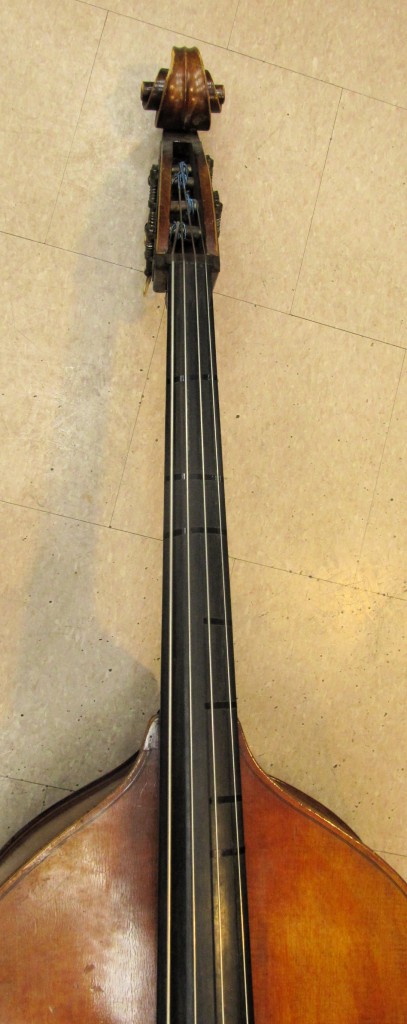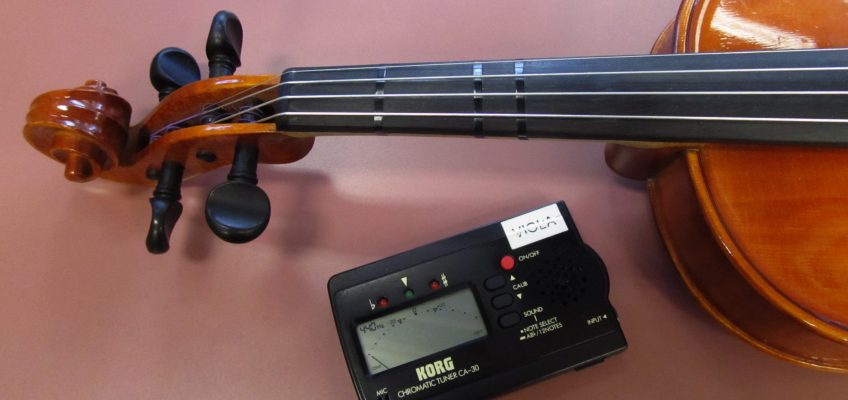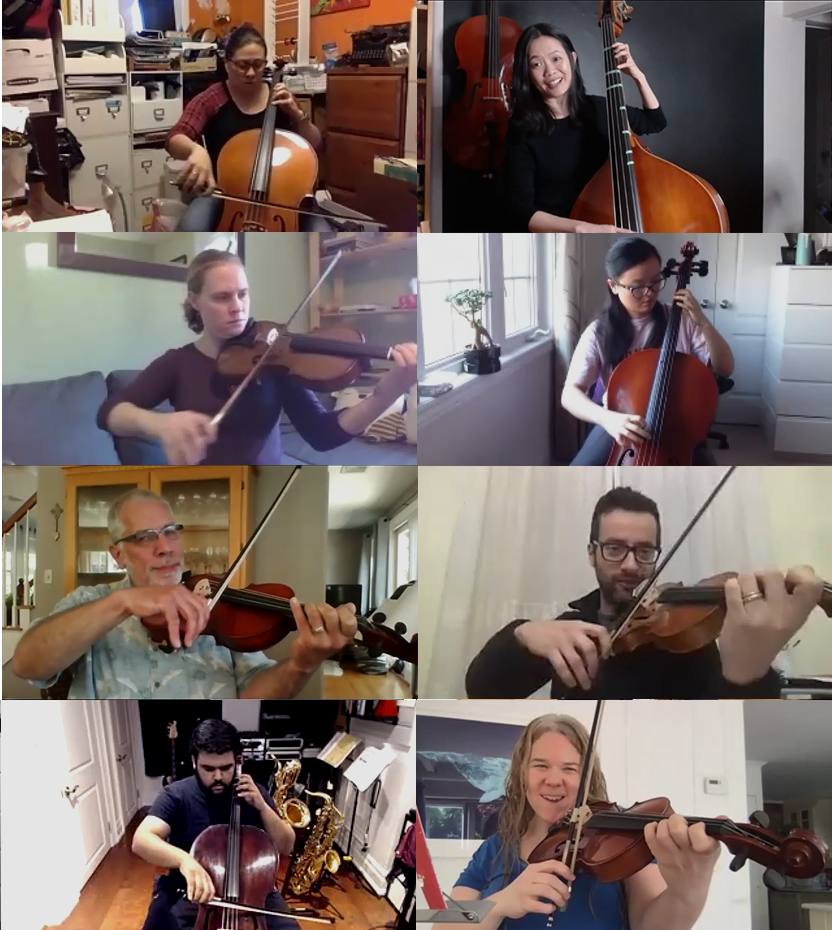When starting a beginner on a stringed instrument, whether it be violin, viola, cello or bass, it is important to set them up for success. On a stringed instrument, this can be daunting, what with the bow, the instrument hold, and the uncharted territory of the fingerboard. Both arms and every digit is doing something new. On the violin and viola holding the instrument with the chin and shoulder is a further awkwardness to overcome. When students are dealing with so many new skills all at the same time it’s important, especially in a classroom setting, to do what you can to help students find success in the beginning stages.
This is particularly important for intonation. I believe that anything you can do to help students get used to hearing notes that are in tune (or close) goes a long way. This to me means choosing to put tapes on the instruments (temporarily) and to use tuners for tuning. It helps them to sound good right from the start, which helps them feel successful and motivates them to persevere.

Taping Instruments
Although there are teachers who have found ways to introduce a stringed instrument without using tapes, and perhaps this is more successful in a private setting, I start with using tapes in both private and classroom settings. In the private setting, the tapes are temporary. Ideally they would be temporary in a classroom setting as well, but because the experienced students are often sharing instruments with beginners, I can only leave a few senior instruments tape-free.
I only tape the first three notes on each instrument except for the bass. The basses are spoiled. They get the full octave under the G-string only, fingered for the G major scale. Otherwise, for the rest of the notes they have to rely on their ears. I also constantly emphasize in their first and second year that the tapes are just a guide, and that they need to use their ears and adjust every note as they play.
I like to use good quality whiteboard tape on the instruments. The best brand I have found is by Magna Visual. Many teachers also recommend vinyl car detailing tape. Both come in black and in different colours, are durable and come pre-cut in the perfect sizes. I like to use black because when you put them on an instrument, they’re subtle and they don’t scream out to everyone “I am a beginner!” But if you are teaching younger beginners, it may help to use a different colour for each finger, although I would prefer to use only a single colour and have them get used to recognizing them as the 1st note, 2nd note and 3rd note on the string to facilitate future lessons on fingering.
The tapes come in 1/8″ widths, which I use for violin and viola, and 1/4″ widths which I use for cellos and basses. Be sure to get good quality thicker tape, like the thickness of electrical tape. The Magna Visual tapes are a very durable and don’t get gooey over time like electrical tape does. They usually last several years so I don’t have to replace them very often at all.
Using Tuners in the Classroom
The next thing I do as soon when they are fairly competent playing the instrument, which is usually around after the winter concert, I teach them to tune themselves with a tuner. When they have to tune themselves to a tuner at the beginning of every class, and they are listening to everyone else tune as well, that’s a lot of times they get to hear the open strings being played in tune, and sets the foundation for learning to tune themselves without a tuner later on.
I have 5 tuners in the classroom, one for each section, 1st violins, 2nd violins, violas, cellos and basses. The tuners that I find work the best are any ones by Korg. It doesn’t matter if it’s the lower end model, the Korgs are great at picking up your notes even in a noisy classroom setting. For the basses, I have a Korg bass tuner to be sure it picks up the lowest strings. And now the Korgs come with a tuner and metronome combination, which is terrific. Another thing to look out for is a headphone jack, so you can hook up the tuner to your class stereo system and blast an A when you want to start teaching them to tune by ear. But that’s another post….
Of course, none of this information is new or unique. I just wanted to share my rationale for making these choices, to give some advice on supplies that have worked well for me, and to set the stage for the exciting stuff to come….
Part of the Teaching Fingering, Shifting and Intonation Without Fear series.




Rhea
Thank you for the tip on the Korg tuner. I’ve always looked at the selection of tuners without a clue as to which one to get.
SmartMusicTeacher
Yes, I definitely recommend the Korg tuners for everyone. They are great!